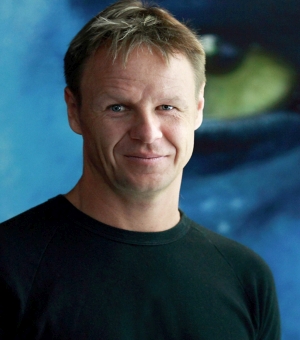

Laboratory for Animate Technologies
Auckland Bioengineering Institute
University of Auckland
Graphics, Imaging and Games Lab
School of Computer Science
Carleton University
Autonomous Facial Animation using models of embodied cognition
Detail Preservation and Enhancement in Image Stylization
In this talk, I will give a tour of selected image stylization methods, including algorithms for stippling, scratchboard, and watercolor effects. Image stylization commonly removes detail from the input photograph; I will emphasize strategies for preserving and enhancing detail, increasing image richness.
Suitable filter design can preserve salient image details such as irregular silhouettes while softening small-scale texture and noise; I will present the cumulative range geodesic filter, specifically intended for image simplification with medium-scale detail preservation. Alternatively, arbitrary detail can be merged with an input photograph, whether arising from additional input images or generated at runtime through image-guided particle systems. I will discuss examples of both.
Academy Award winner Associate Professor Dr. Mark Sagar is the director of the Laboratory for Animate Technologies at the Auckland Bioengineering Institute, where his interest is in bringing digital characters to life using artificial nervous systems to empower the next generation of human computer interaction. His laboratory is pioneering neurobehavioral animation that combines biologically based models of faces and neural systems to create live, naturally intelligent, and highly expressive interactive systems. Mark previously worked as the Special Projects Supervisor at Weta Digital and Sony Pictures Imageworks and developed technology for the characters in blockbusters such as Avatar, King Kong, and Spiderman 2. His pioneering work in computer-generated faces was recognized with two consecutive Scientific and Engineering Oscars in 2010 and 2011. Dr. Sagar holds a Ph.D. in Bioengineering and is a recipient of the University of Auckland’s 2012 Distinguished Alumni Award.
David Mould received his PhD in computer graphics from the University of Toronto in 2002. Prior to this, he earned a BSc in combined physics and computer science from the University of British Columbia. He was a faculty member at the University of Saskatchewan for six years, and is presently an associate professor at Carleton University, where he directs the Graphics, Imaging, and Games Lab in the School of Computer Science. Dr. Mould's research interests include game design, non-photorealistic rendering, and procedural natural phenomena.